Yesterday morning I picked carrots to send with my kids in their lunches for the school day. I walked out to the pot on the driveway, pulled up about twenty, gave the green tops to the chickens, washed the roots off, and placed them in the lunch boxes.
I grow carrots both in the ground and in containers. I still struggle to get consistent results from carrot seed sown directly in my vegetable beds: sometimes the “stand” is great but sometimes it’s spotty and I feel like I wasted a month waiting to judge the germination.
However, for me, growing in containers is as reliable as the sun setting in the west.
So maybe you’d like to try it. Or maybe a part of my technique will improve your results.
Varieties
The favorite variety of my family is Mokum so I grow that variety in containers. Fortunately, Mokum is suitable for containers because it’s not a particularly long carrot. It’s shaped like a finger, or a cigar, usually with a blunt tip. (It’s called a “Nantes” type.)
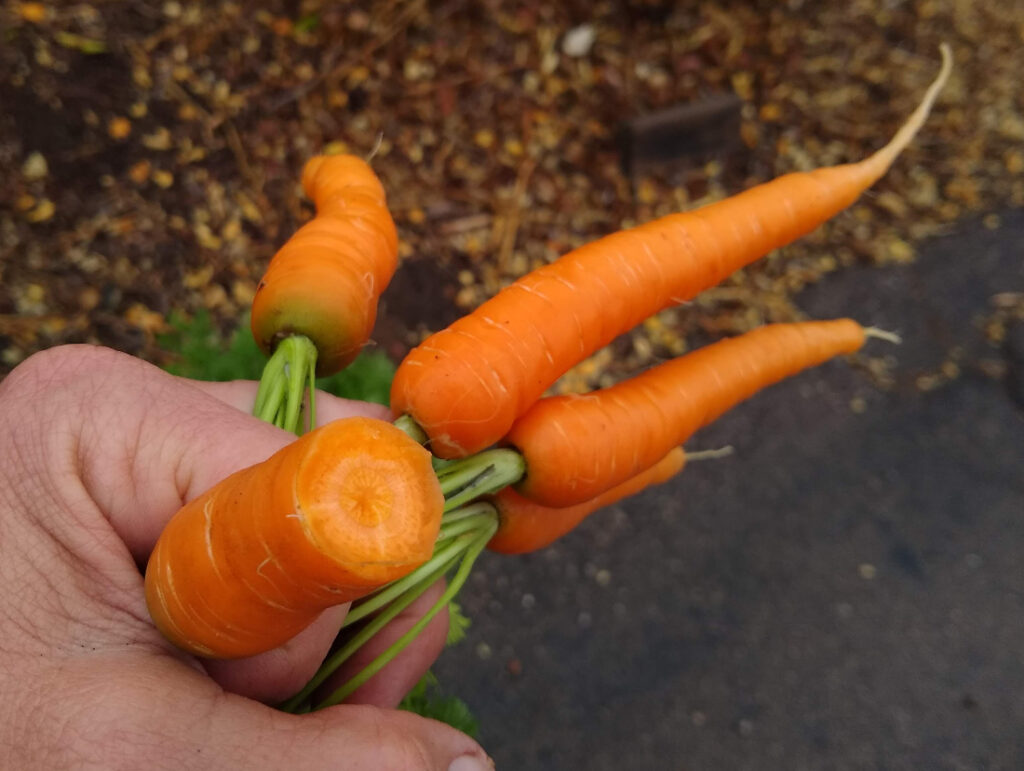
My guess is that shorter varieties will do best in containers, but you absolutely are not restricted to only growing very stubby types (sometimes called “Parisian” types). If the container is sufficiently deep, I don’t see why you couldn’t have success with long varieties too (“Imperator” types). How deep? I bet that a pot that is 18 inches in depth is enough.
Pot size
My go-to has been a five-gallon container. These actually have a volume of around four gallons, but they’re often referred to as five-gallon or #5 pots. Their dimensions are 11 or 12 inches in height and 10 or 11 inches in diameter at the top. Fruit trees are often sold in these containers.
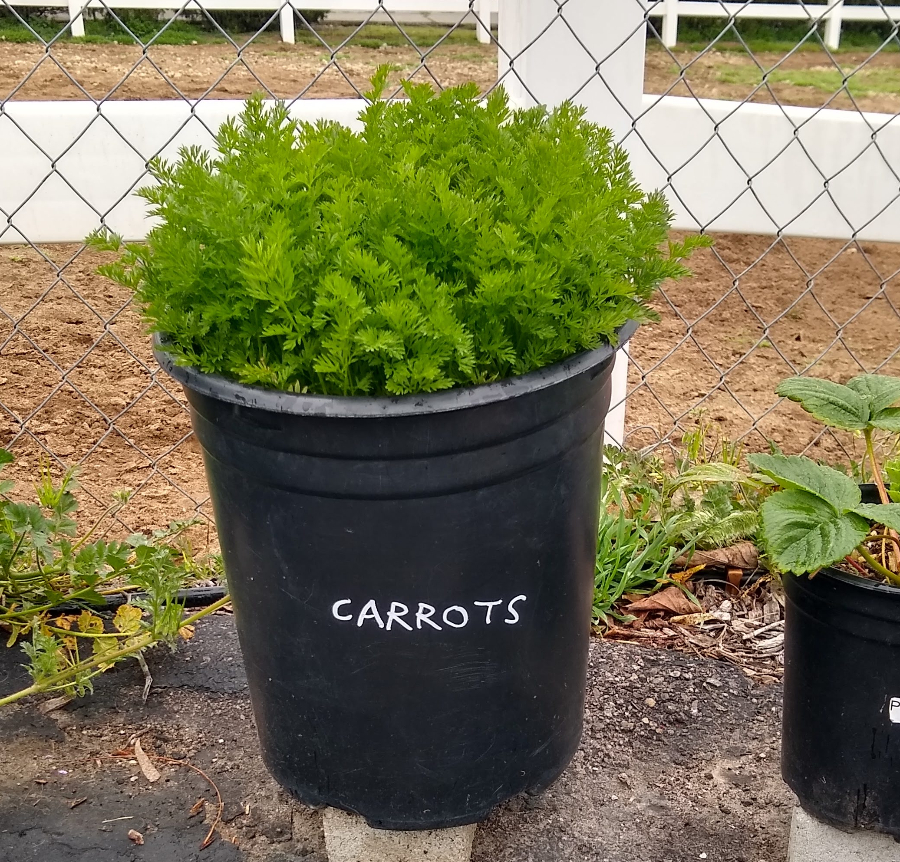
Potting mix
I fill the container with my homemade chicken compost. It comes from my chicken yard and consists of chipped trees, garden scraps, kitchen scraps, chicken manure, and a little dirt. I age it for at least a month before using it.
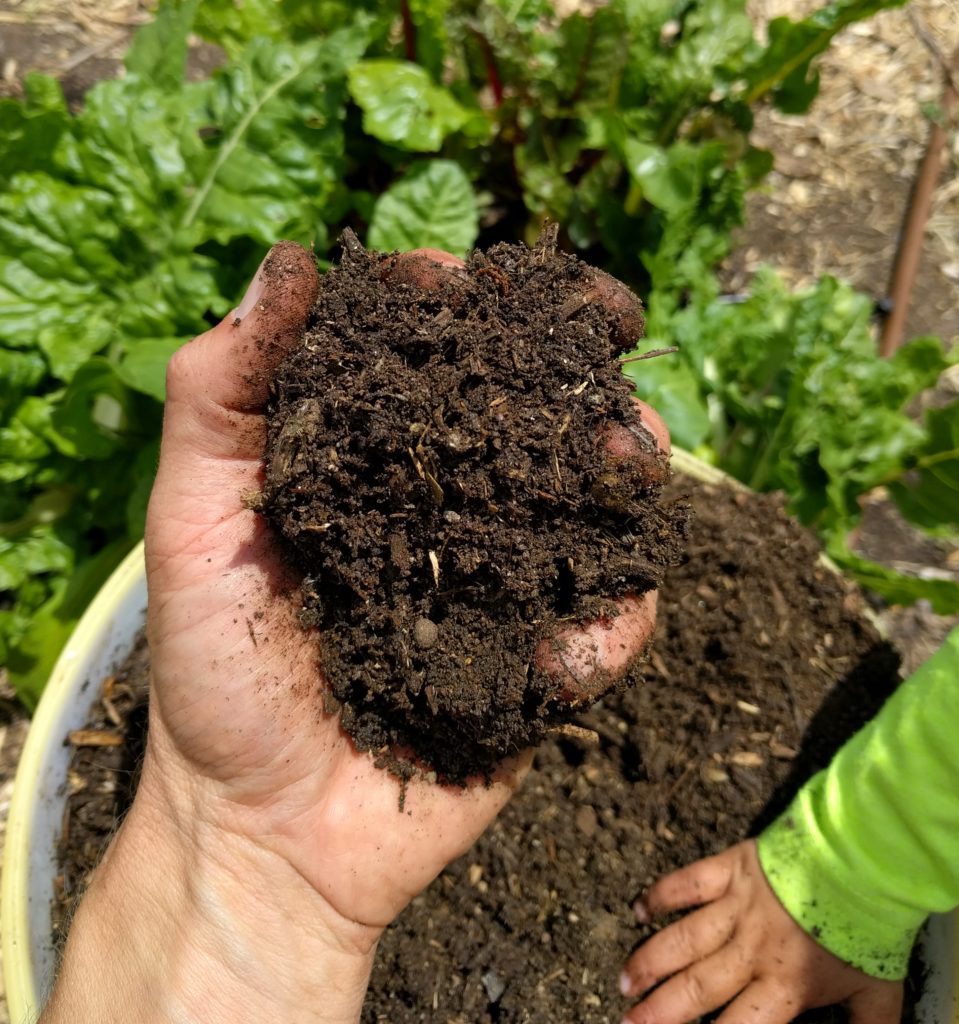
If there’s a potting mix that you’ve used with success to grow other vegetables, then I suspect it would work well for carrots too. I know of no special needs for carrots compared to most other vegetables that you might grow in a pot.
Fill the container to within an inch of the rim to maximize depth, but don’t fill higher or else when you water the pot it will easily overflow.
Sowing the seeds
My process is to first thoroughly soak the compost in the container. Then I sow the seed on the surface by sprinkling about one seed every half inch. I cover the seed with compost just enough so that I can no longer see the seed. Then I gently water the surface.
Finally, I place the container in the shade. Carrot seeds germinate well if they are kept moist and in temperatures between about 50 and 80 (although more slowly near 50 and more quickly near 80). Keeping the pot in the shade means no direct sun is drying the surface of the mix, and the carrot seeds stay cool and temperatures don’t fluctuate as much as in the sun.
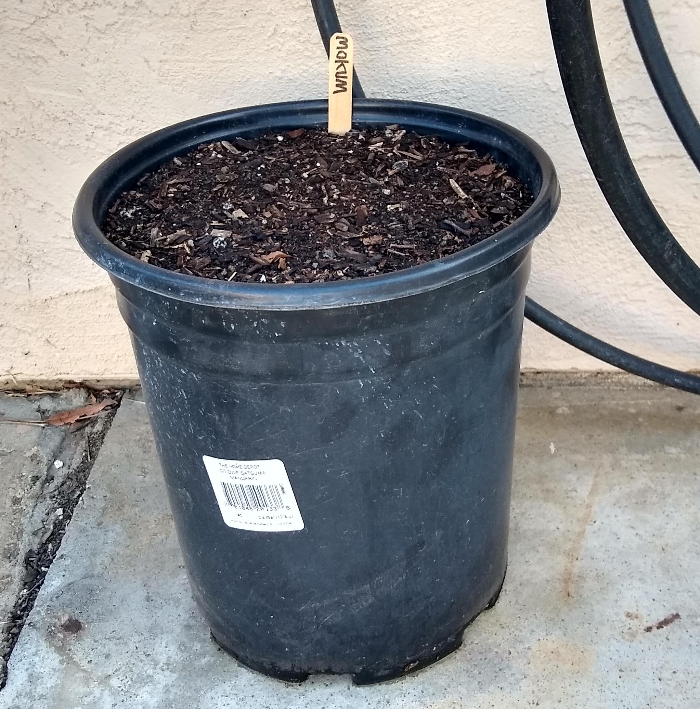
This is a huge advantage compared to sowing out in the ground, in the sun. There, you must water the soil surface often or place shade cloth over the area, especially when you sow in late summer or early fall. This is more work compared to simply placing the pot in the shade.
Protecting the seedlings
Once the seeds are up and growing, they need to be moved into the sun. While the seedlings are small, they are attractive to birds so I place hardware cloth over the top of the pot at that time until the seedlings are about three inches tall, at which point birds are no longer interested in eating them.
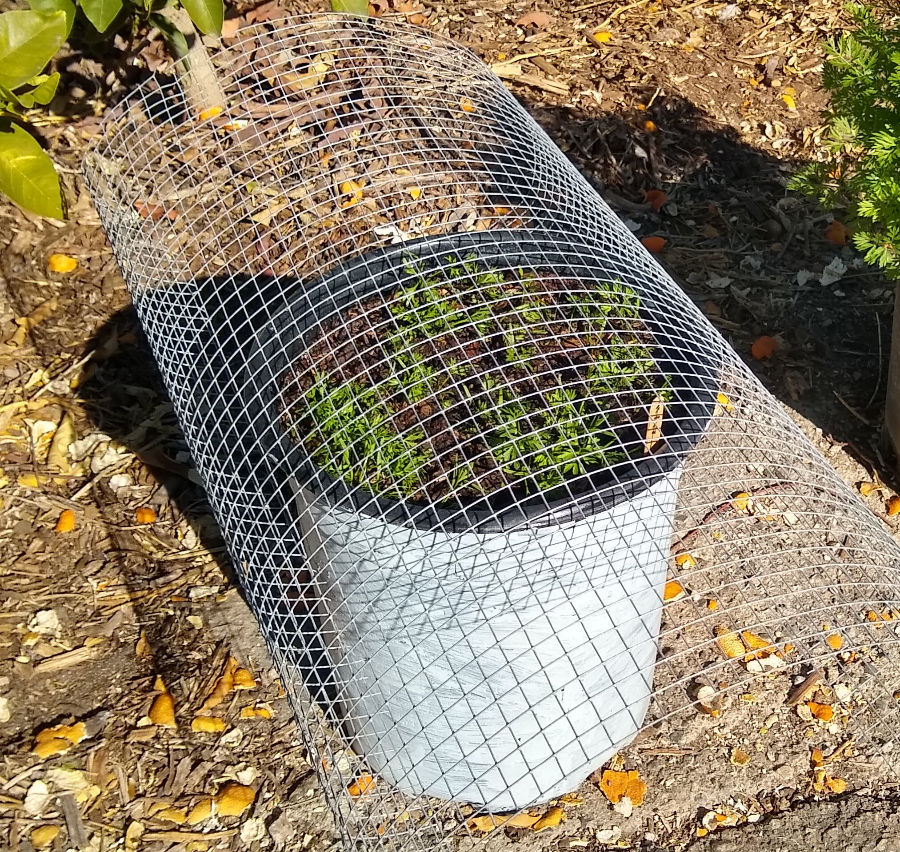
The carrot seedlings are protected from being eaten by pill bugs and earwigs (the critters that most often damage my carrot seedlings grown in the ground) just by being off the ground at the top of the pot. Occasionally, I lift the pot to see if any of these bugs or slugs are hiding under the pot. If so, smoosh.
Watering and shading
I have found with carrots in containers that it is best to use a pot with many holes in the bottom to ensure good drainage, and then to err on the side of watering too much rather than not enough.
In the late fall and winter, a black pot is fine. But in the spring and summer, a black pot’s south side heats up more than the carrots like. Paint the south side white or better yet, shade it.
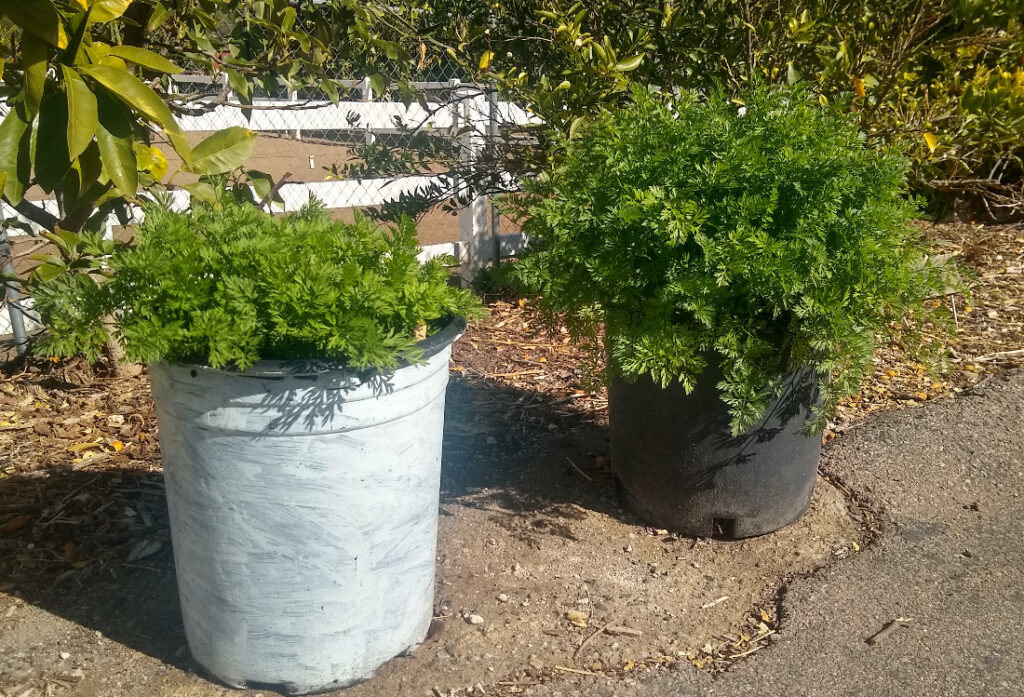
Yield
After germination, I thin the seedlings to be about an inch apart. If they are farther apart, they’ll grow a little bigger. If they are closer than an inch, they’ll twist around one another and be a bit smaller.
From a pot that I sowed on October 24, 2024, I began harvesting on February 1, 2025. I didn’t thin the seedlings as much as I should have, but the yield was still good. About 70 carrots of the diameter of my finger or larger came from the five-gallon container.
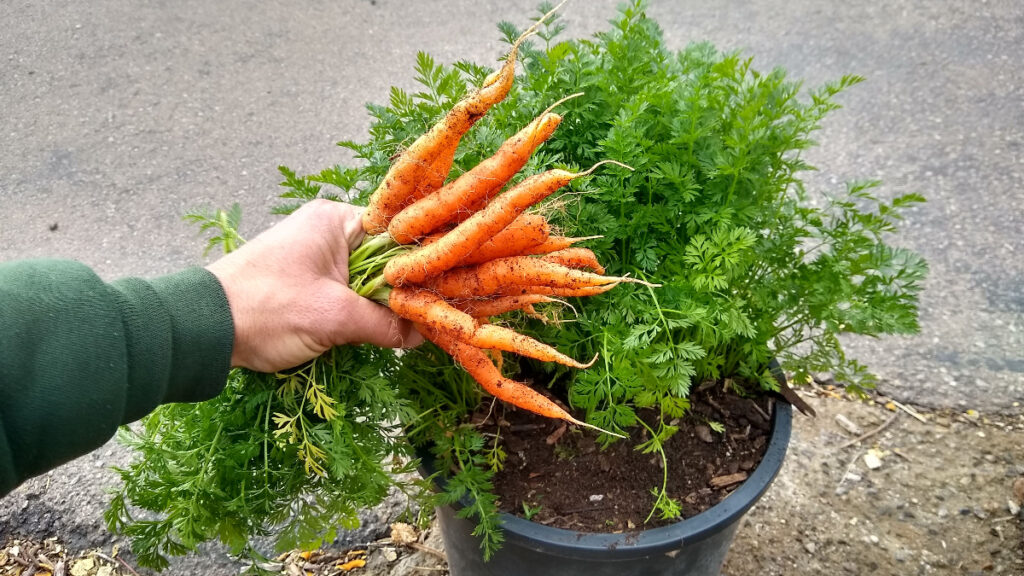
One of the downsides to growing carrots in containers is that it seems to take more work per carrot. I could sow a long row of carrots in the ground and yield hundreds with about the same effort. But since my results in the ground are not as consistent, overall I’d guess that I average more carrots from containers for the time spent.
How to harvest
I’ve harvested carrots from containers in two ways. One, I’ve knocked the sides of the container and harvested the whole thing at once by dumping them all out. It’s so easy that way.
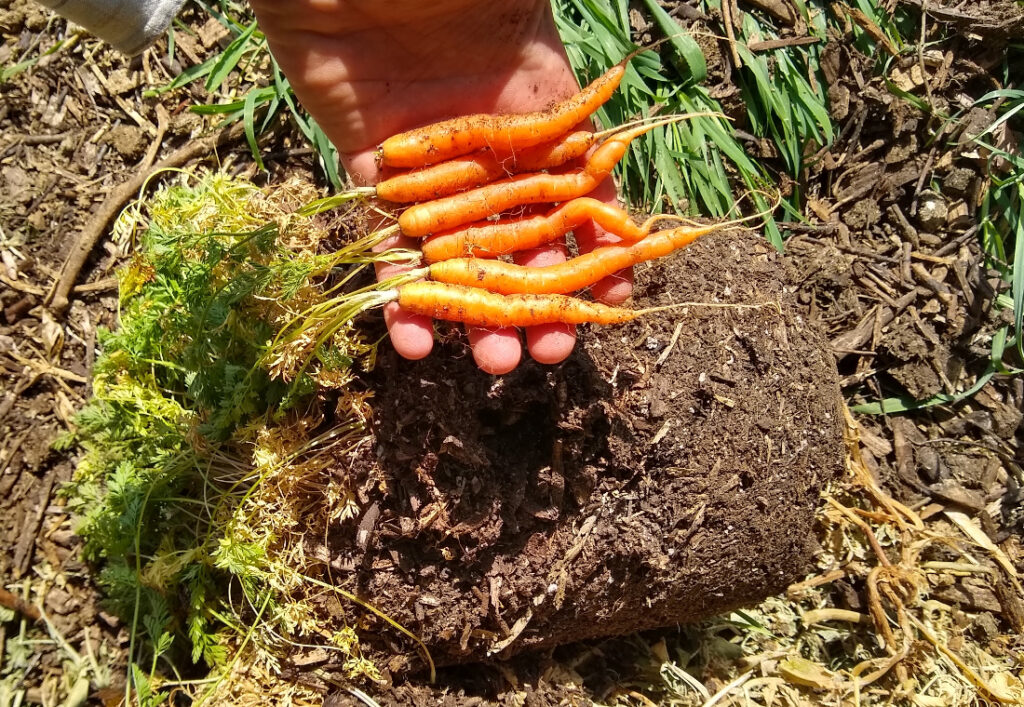
Two, I’ve harvested individual carrots. This is hard to do without breaking the first ones. I use a nail stake to loosen the mix near the first carrot. Once you have a few carrots out, then the rest are easy because there are cavities in the mix that allow you to wiggle and twist the roots rather than just pulling up on the tops.
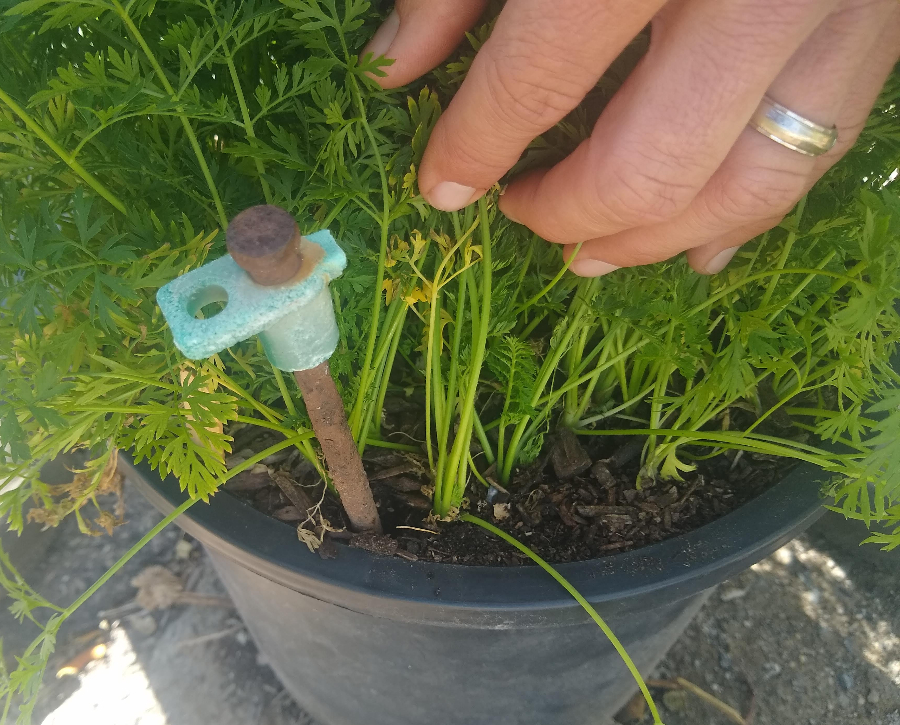
During this dry winter of 2024-2025, I have been especially grateful for the carrots I’ve grown in containers because my carrots in the ground have done terribly! My germination was spotty because there was never rain to help keep the soil moist, and the bugs and birds ate many emerging seedlings because there were no nearby weeds to feed them (no rain, no weeds). So I will continue to always sow some carrots in containers as a back up, so that my kids have something orange, sweet, and crisp to snack on.
My general post on “Growing carrots in Southern California”
No ads, not in my Yard Posts. That is thanks to generous Supporters like you.
All Yard Posts are listed HERE

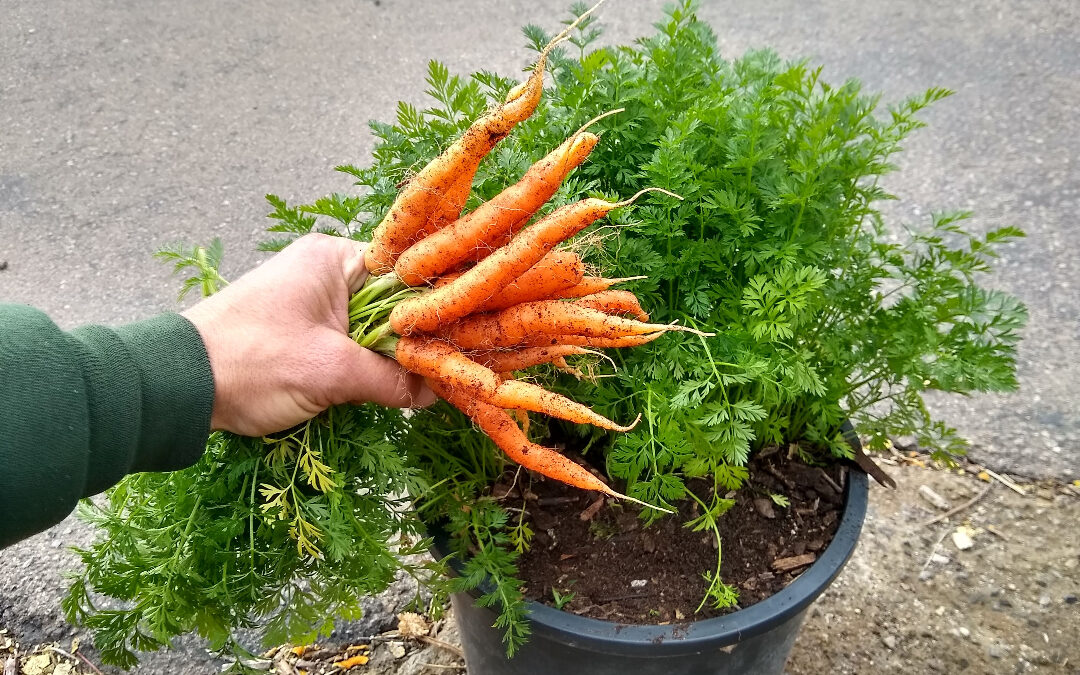


San Diego Seed Co posted a great video about getting carrots to germinate well in-ground a couple of years ago. They cover the seeds with vermiculite and then lay a board of wood (or maybe cardboard could work, too) until they see germination to trap the moisture. Vid here: https://m.youtube.com/watch?v=OxSUYlKgQh4
I’ve been meaning to plant some carrots in containers – thank you for the reminder!
Hi Sarah,
Thanks for sharing this. Covers are very helpful for carrot germination, I agree. I have used lots of different ones, and I’ve seen others use many more. But covers come with a downside, in that they provide perfect habitat for the bugs that nibble on the emerging carrot seedlings, such as earwigs and pillbugs. That’s always been the downside that I have trouble managing without resorting to poisons.
I imagined you already knew about the cover thing 😉
I just need to find a way to use covers without inviting all the bugs to hide under them!
I grew one carrot in a container. Germination wasn’t that great. Now I’m germinating some lettuce inside and have some broccoli going outside. I realized that there’s a lot of cool weather ahead so might as well stop dreaming about spring! Oh, you recently asked if people had avocado flowers. I do on two trees, a Pinkerton and a Fuerte. GEM and Hass not even close.
Hi Randy,
Today, I also have some flowers open on Fuerte, plus Carmen and Mexicola. Bacon is getting close, and Mayo is getting close. Most others are still asleep.
But I have seen at a few other farms nearby that some Hass trees are flowering, and some GEMs are getting fat flower buds.
Great post! My in-ground carrots are looking kind of sad at the moment; maybe I should try containers next year. By the way, are you planning on releasing a calendar this year?
Hi Holly,
I’m sorry but I’m not making a calendar this year. I’m working on a new “evergreen” calendar that can be used for any year. Hope to have it ready sometime in spring.
Some of the literature suggests mixing sand with the soil. I use 420 planting mix and have tried adding sand but not sure if it really does anything.